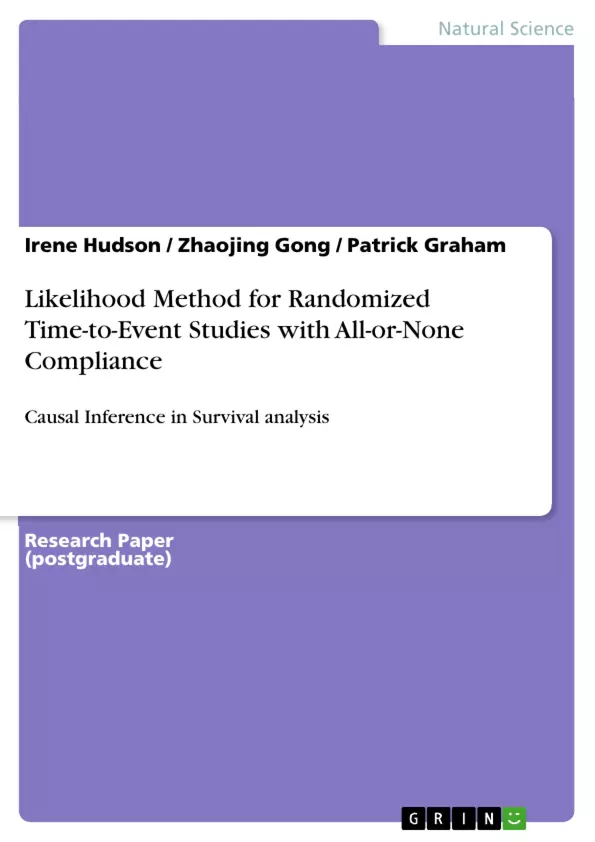Estimating causal effects in clinical trials often suffers from treatment non-compliance and missing outcomes. In time-to-event studies, it is more complicated because of censoring, the mechanism of which may be non-ignorable. While new estimators have recently been proposed to account for non-compliance and missing outcomes, few papers have specifically considered time-to-event outcomes, where even the intention-to-treat (ITT) estimator is potentially biased for estimating causal effects of assigned treatment.
In this paper we develop a likelihood based method for randomized clinical trials (RCTs) with non-compliance for time-to-event data and adapt the EM algorithm according to derive the maximum likelihood estimators (MLEs). In addition, we give formulations of the average causal effect (ACE) and compliers average causal effect (CACE) to suit survival analysis.
To illustrate the likelihood-based method (EM algorithm), a breast cancer trial data was re-analysed using a model, which assumes that the failure times and censored times both follow Weibull and Lognormal distributions, respectively (termed the NIGN-WW model and NIGN-LL model).
Table of Contents and Study Information FAQs
What is the main topic of this document?
This document previews a comprehensive language study focusing on likelihood methods for randomized time-to-event studies, particularly addressing the issue of all-or-none compliance and non-ignorable censoring.
What is included in this language preview?
The language preview includes the title, table of contents, objectives and key themes, chapter summaries, and key words related to the study.
What does the table of contents contain?
The table of contents lists the chapter titles along with their page numbers, providing a structured overview of the document's contents.
What is the HIP study discussed in this document?
The Health Insurance Plan (HIP) of Greater New York conducted the breast screening study during the 1960s used as an example.
What are the objectives of the main study?
The primary objective is to develop a likelihood-based method for estimating causal effects in randomized clinical trials with non-compliance, especially for time-to-event data, and to adapt the EM algorithm to derive maximum likelihood estimators (MLEs).
What are some key words associated with this study?
Key words include: Causal inference, Noncompliance, Survival analysis, Maximum likelihood, EM algorithm, Weibull distribution, HIP breast cancer trial, CACE, ITT analysis.
What is the basic notation used in this study?
The notation includes variables like: assigned treatment (Z), Compliance types (U), Received treatment (D), Failure time (T), Censored time (C), R, Y, Potential and Observable Data for subject i.
What are the main assumptions made in the study?
The main assumptions include: Stable Unit Treatment Value Assumption (SUTVA), Random assignment, Exclusion restriction, Monotonicity, and Latent ignorability.
What are the core computational issues in the study?
Computational issues involve maximization of the Likelihood Function using the EM algorithm, Posterior Probabilities of Compliance type U, the structures of the Expectation function Q (T, Tk), Maximisation of the Expectation function Q (T, Tk), and Estimation of standard errors.
What methods are used for standard error estimation?
Standard errors for estimated model parameters are derived using the observed information matrix (OIM).
What is the Idealised Likelihood function in this study?
It’s proportional to the joint distribution of all observed variables which also has the effect of addressing the non-ignorable censoring mechanism.
What model specifications are given in the language preview?
Specific non-ignorable PPO survival models, namely the NIGN-WW model and the NIGN-LL models, are specified and used for re-analysis.
- Arbeit zitieren
- Irene Hudson (Autor:in), Zhaojing Gong (Autor:in), Patrick Graham (Autor:in), 2009, Likelihood Method for Randomized Time-to-Event Studies with All-or-None Compliance, München, GRIN Verlag, https://www.hausarbeiten.de/document/357300


